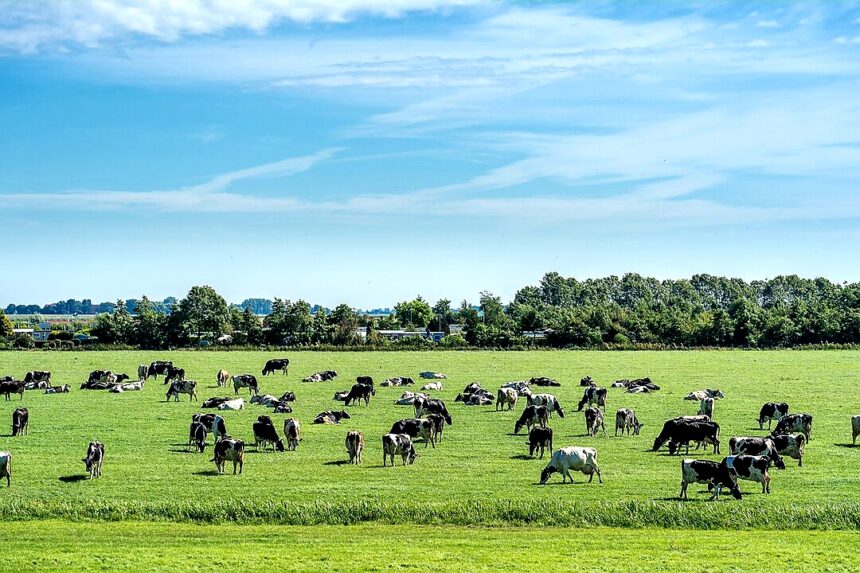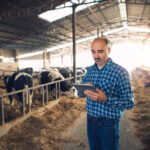Maintaining healthy pastures and grazing land is essential for livestock farming. Proper care ensures sustainable forage growth, supports animal health, and maximizes land productivity. To achieve this, investing in the right equipment is key. From mowing to fertilizing, each tool plays a specific role in pasture maintenance. This article outlines the best equipment for keeping grazing land in top condition and how to use it effectively.
1. Mowers and Brush Cutters
Purpose:
Mowers and brush cutters are essential for controlling overgrown grass, weeds, and brush. Regular mowing encourages uniform grass growth and prevents invasive plants from taking over.
Types:
- Rotary Mowers: Ideal for cutting tall grass and small shrubs. They are versatile and durable for large pastures.
- Flail Mowers: Suitable for rough terrain, flail mowers handle thick vegetation and leave a clean finish.
- Brush Cutters: Perfect for managing tougher vegetation, such as woody plants and dense undergrowth.
Usage Tip:
Adjust the cutting height to maintain optimal grass length, usually between 3 to 5 inches, to promote regrowth and prevent soil compaction.
2. Harrows
Purpose:
Harrows are used to level the ground, break up clumps of soil, and spread manure or plant residues evenly. They improve soil aeration, which enhances water infiltration and root development.
Types:
- Chain Harrows: Best for breaking up manure piles, leveling soil, and spreading organic material.
- Disc Harrows: Effective for heavier tasks, such as breaking up compacted soil or preparing land for reseeding.
Usage Tip:
Use harrows in early spring or after grazing periods to refresh the pasture and prevent soil compaction.
3. Seeders and Overseeders
Purpose:
Seeders and overseeders are essential for planting new grass or reseeding areas where grass has thinned out. Overseeding ensures a dense, healthy pasture that resists weeds and erosion.
Types:
- Broadcast Spreaders: Scatter seeds over large areas quickly and evenly.
- Drill Seeders: Place seeds directly into the soil for better germination rates.
Usage Tip:
Combine overseeding with harrowing for better seed-to-soil contact, and choose grass varieties suitable for your climate and livestock.
4. Fertilizer Spreaders
Purpose:
Fertilizer spreaders distribute nutrients evenly across the pasture, ensuring healthy grass growth. Proper fertilization improves forage quality and promotes soil fertility.
Types:
- Drop Spreaders: Offer precise application for small areas or specific sections of the pasture.
- Broadcast Spreaders: Cover larger areas efficiently, ideal for extensive pastures.
Usage Tip:
Test soil regularly to determine nutrient deficiencies and apply fertilizers based on recommended rates to avoid over-fertilization.
5. Sprayers
Purpose:
Sprayers are used for applying herbicides, pesticides, or liquid fertilizers to manage weeds, pests, and diseases. They help maintain healthy forage and prevent invasive plant species.
Types:
- Boom Sprayers: Cover large areas quickly and uniformly.
- Spot Sprayers: Ideal for targeted weed control in small or specific areas.
Usage Tip:
Follow label instructions when applying chemicals to ensure effectiveness and protect the environment.
6. Rollers
Purpose:
Rollers are used to flatten the ground, press seeds into the soil, and break up soil clumps. They create a smooth surface, improving water retention and seed germination.
Types:
- Smooth Rollers: Best for compacting soil and leveling uneven terrain.
- Spike Rollers: Useful for aerating the soil while rolling.
Usage Tip:
Use rollers after reseeding or to firm up the soil after winter frost heaving.
7. Fencing Tools and Equipment
Purpose:
Fencing tools are essential for managing grazing rotations and protecting pastures from overgrazing. They help establish boundaries and control livestock movement.
Types:
- Electric Fences: Flexible and easy to set up for rotational grazing systems.
- Post Drivers: Simplify the installation of wooden or metal fence posts.
- Wire Tighteners: Maintain the tension of fencing wire to ensure durability.
Usage Tip:
Regularly inspect and repair fences to prevent livestock from wandering into sensitive or overgrazed areas.
8. Aerators
Purpose:
Aerators break up compacted soil, allowing air, water, and nutrients to penetrate deeper into the ground. This improves root growth and pasture resilience.
Types:
- Plug Aerators: Remove small cores of soil, creating space for better aeration.
- Spike Aerators: Create small holes in the soil without removing plugs.
Usage Tip:
Aerate pastures during the growing season, especially after periods of heavy livestock traffic.
9. Livestock Watering Systems
Purpose:
Providing clean, accessible water is critical for healthy livestock and maintaining pasture quality. Portable or fixed watering systems prevent overuse of natural water sources, such as ponds or streams.
Types:
- Troughs: Simple and effective for providing water in fixed locations.
- Portable Water Tanks: Ideal for rotational grazing setups.
- Automatic Waterers: Ensure a constant supply of fresh water while reducing waste.
Usage Tip:
Position water sources strategically to prevent livestock from congregating in one area, which can lead to overgrazing and soil erosion.
10. Manure Spreaders
Purpose:
Manure spreaders distribute organic material across the pasture, recycling nutrients back into the soil. They are vital for maintaining soil fertility and reducing waste.
Types:
- Broadcast Spreaders: Spread manure over large areas.
- Drop Spreaders: Offer precise application for smaller or targeted areas.
Usage Tip:
Spread manure evenly to avoid nutrient hotspots and incorporate it into the soil with a harrow to minimize odor and runoff.
Maintaining pastures and grazing land requires the right combination of equipment and best practices. By investing in tools like mowers, seeders, harrows, and sprayers, farmers can ensure their pastures remain healthy, productive, and sustainable. Regular maintenance of equipment and timely implementation of pasture care routines will not only benefit the land but also support livestock health and farm profitability.







